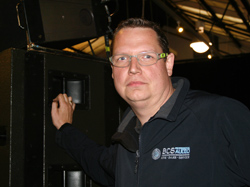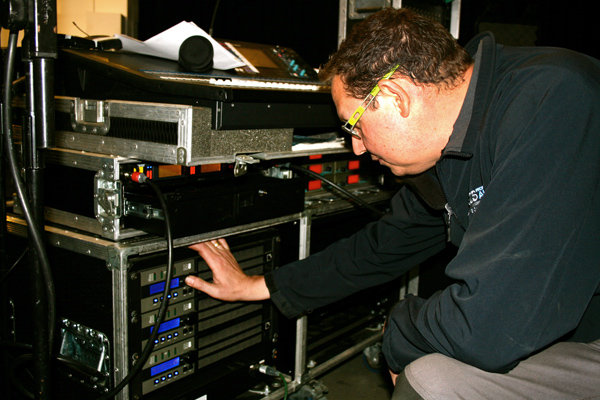
Will you elaborate?
Well, in venues with balconies, for example, we now fly the PA lower than we would have done in the old days, but we angle it up into the balconies so it still brings peoples’ attention down to the stage. It’s a lot more to think about.
Before, you’d have a groundstacked PA and a flown PA, and the flown PA would be in the eyeline of the audience in the balcony, so their attention was being drawn 10, maybe 20 feet above where the performance was happening.
So it’s a psychological thing as well, then?
It really is. You have to try and get across to the audience that the performance is happening there, and now we can develop that with systems; you can bring the audience into the show more, basically.
What are the other key differences compared to working the role a decade ago?
The gear is all a lot lighter now. And instead of time-aligning stuff with an old digital delay unit in the rack, which wasn’t all that accurate anyway, most of the loudspeaker systems now come with their own amplifier, which has its own delay circuit inside, so you can get everything absolutely spot on.
What’s your preferred kit when it comes to figuring delay times?
I use (Rational Acoustics) Smaart, but unlike many techs, I also use a laser measure. I then figure out how close the laser measurement is to the Smaart reading, which allows me to put that little bit of human element into it. I don’t like anything being absolutely perfect as it just feels clinical; my methods are more organic. Yes, it’s all going digital, but I prefer to have some ‘imperfections’ in there rather than it all being bang on the numbers all the time.
So basically, use the tools as a guide but don’t take them as gospel?
That’s the way I approach it. Besides, it’s very negotiable whether you can actually hear the differences when you’re talking about a millisecond or two. The time-alignment of systems is such a minefield these days, especially when figuring out what bits of the system you need to delay back to what point. The biggest trend we’re seeing at the moment is bands wanting to delay everything back to the kick drum.
Because it’s typically the furthest point back on stage?
Exactly, but again, this is all negotiable. It’s the very clinical side of system teching, and I tend to steer away from that. Yes, in the old days, you’d need a whole rack of digital delay units to do the job, and technology makes it far easier to accomplish now. But generally, I just don’t go down that road unless I’m asked to by the engineer – it’s their show after all, and I’m there to work with them, not against them.
What does the future hold for system techs?
Well, while many FOH engineers know how to mix, some still know little about the physics and science behind the systems, so they have to have trust in people like us. What we can do now is light years ahead of where it used to be, but I’m always learning new tricks. I find myself asking other techs “why are you doing it like that?” because I want to understand.
I reckon there are seven ways of doing everything and you’ll never find them all yourself; you have to learn from other people. Let’s all share the knowledge and try to make sure every gig is the best it can ever be. That’s what I say.
Paul Watson is the editor for Europe for Live Sound International and ProSoundWeb.

